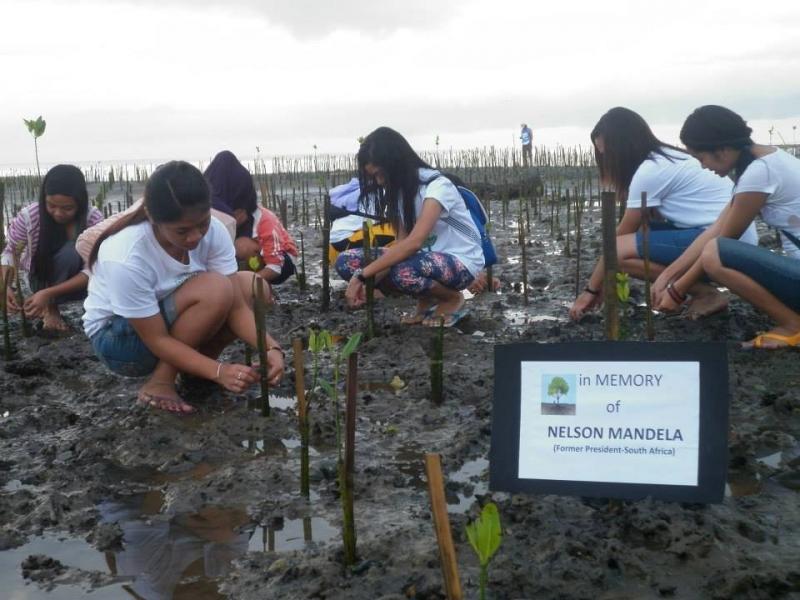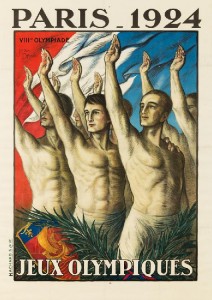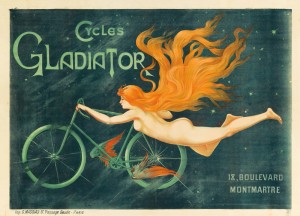Cat Stevens: King of a Land

If I was a king of a land
I’d free every woman and man
I’d let them go
I’d set them free to serve You
If I knew every fish in the sea
And every bird in the tree
I’d hear their call
I’d hear them speak Your name
If I ran the schools of this world
I’d teach every boy and girl
I’d let them learn the truth
I’d let them know Your glory
If I had the stairs to the sky
(If I had the stairs to the sky)
I’d raise my voice up there high
(Raise my voice up thеre high)
I’d want the world to hear
Your pеrfect words and thank You
If I had a mountain of gold
I’d try to feed every poor soul
And give them hope again
And let them taste Your bounty
If I could reach every dream
I still would search the unseen
To find a way
That leads us to Your mercy
If I was a king of a land
(If I was a king of a land)
I’d free every woman and man
(Free every woman and man)
I’d let them go
I’d set them free to serve You
This post is being published on Saturday 6th May 2023… the day the Coronation of King Charles III and Queen Camilla is taking place at Westminster Abbey in London.
Wouldn’t it be great if Cat Steven’s lyrics were echoed by the actions of the kings and queens of the world?
Thanks Cat — you’ve always been a favourite and an inspiration!
Read MoreMaya Angelou: The Song Bird Flies
what you said,
people will forget what you did,
but people will never forget
how you made them feel.
— Maya Angelou —
Maya Angelou, a voice that inspired generations through powerful prose and poetry and the light of a fiery and shining soul, has died at the age of 86.
Like thousands of others, I discovered the power of Maya Angelou’s writing when I came across the book “I Know Why The Caged Bird Sings” – seven words that I couldn’t get out of my head, and never left my heart. Why would someone put something as beautiful and free as a bird into a cage? And why would a caged bird choose to sing?
Three year old Maya and her brother Bailey Junior were sent to live with their grandmother in Stamps, Arkansas after their parents divorce. Maya spent 10 years discovering what it was like to grow up in one of America’s poorest regions with all the prejudice and racial segregation of the Deep South (such as the white dentist who refused to treat Maya’s rotting teeth, even when reminded by her grandmother that she had lent him money during the Depression).
Maya was born Marguerite Ann Johnson in St Louis, Missouri on 4 April 1928 and the name Maya originated from her brother’s way of saying “My-a sister”.
The Silent Voice
At the age of 7, when visiting her mother in St Louis, she was raped by her mother’s boyfriend. When she told her family what had happened, the man was arrested, tried and released, but was murdered shortly afterwards. For the next five years, Maya Angelou didn’t speak:
“When I heard about his murder, I thought my voice had killed a man and so it wasn’t safe to speak.
“After a while, I no longer knew why I didn’t speak, I simply didn’t speak.”
During her silence, she read incessantly and was eventually persuaded to speak again by Mrs. Bertha Flowers, “the aristocrat of Black Stamps” who encouraged her reading, and recognising her love of poetry told her that to be fully experienced, poetry had to be read aloud. “You will never love poetry until you actually feel it come across your tongue, through your teeth, over your lips.”
Maya Angelou went on to have an extraordinary career which she writes about in her books, including becoming San Francisco’s first female cable car conductor at 15, the experience of being a young mother at 16, time as a dancer, waitress, prostitute, actor and singer, travelling around Europe and Africa with the Opera Porgy and Bess, her involvement with the civil rights movement, working with both Malcolm X and Martin Luther King and experiencing the trauma of both their assassinations – King was killed on her birthday.
She writes of falling in love with South African civil rights activist Vusuma Make and moving to Cairo with him, practicing as a journalist in Egypt and later in Ghana during the time of decolonisation, her son’s car accident and the years after her return to the US in 1965 and her decision to start writing “I Know Why The Caged Bird Sings”.
Other autobiographical books that followed the Caged Bird include
“Gather Together in My Name “(1974),
“Singin’ and Swingin’ and Gettin’ Merry Like Christmas” (1976),
“The Heart of a Woman” (1981),
“All God’s Children Need Traveling Shoes” (1986),
“A Song Flung Up to Heaven” (2002), and
“Mom & Me & Mom” (2013, at the age of 85).
Ritual
Maya Angelou used the same “writing ritual” for many years and described her writing process as regimented.
The Ritual involved getting up at five in the morning and booking into a hotel room where the staff have been instructed to remove all pictures from the walls. She has a bottle of sherry, a deck of playing cards, a copy of Roget’s Thesaurus and the Bible, and she writes on legal pads.
She places herself back in the time she is writing about, even when traumatic and plays solitaire she says to reach a place of enchantment and access her memories more effectively. “It may take an hour to get into it, but once I’m in it—ha! It’s so delicious!”. It is not the process which she finds cathartic but rather the relief that she finds in “telling the truth”.
“I try to get there around seven, and work until around two in the afternoon … Maybe after dinner I’ll read to [my husband, Paul du Feu] what I have written that day. He doesn’t comment. I don’t invite comments from anybody but my editor.”
Angelou has credited African-American poet Paul Laurence Dunbar along with Shakespeare for inspiring her “writing ambition” and the title of her first book comes from Dunbar’s poem “Sympathy.”
the caged bird sings, ah me,
When his wing is bruised
and his bosom sore,
When he beats his bars
and would be free;
It is not a carol of joy or glee,
But a prayer that he sends
from his heart’s deep core,
But a plea, that upward
to Heaven he flings –
I know why
the caged bird sings.
— Paul Laurence Dunbar —
Read More
Nelson Mandela: The Giant Who Brought Light
‘He was truly one of the greatest human beings to walk this Earth.’ Archbishop Tutu
Journalist Jon Snow recalls meeting the “tall, grey, beaming, energised” Mandela in 1990 and being moved to tears.
“Somehow prison had purged him of pride. He was fascinated by everyone he met,” writes Snow. He kept asking me questions. At one point in that first interview I had to say to him: “Mr Mandela, it is I who have to ask you the questions, not the other way around.”
27 years in prison meant Mandela had “missed the birth of the media age, he had never adopted a politician’s way of not answering questions,” Snow adds “In truth he never ever struck me as a politician, but as an exceptional human being.”
His Day is Done – A Tribute Poem for Nelson Mandela by Dr Maya Angelou

Students and teachers planted 5000 mangrove trees in the Philippines, 7 Dec 2013, in memory for Nelson Mandela.
His day is done.
Is done.
The news came on the wings of a wind, reluctant to carry its burden.
Nelson Mandela’s day is done.
The news, expected and still unwelcome, reached us in the United States, and suddenly our world became somber.
Our skies were leadened.
His day is done.
We see you, South African people standing speechless at the slamming of that final door through which no traveler returns.
Our spirits reach out to you Bantu, Zulu, Xhosa, Boer.
We think of you and your son of Africa, your father, your one more wonder of the world.
We send our souls to you as you reflect upon your David armed with a mere stone, facing down the mighty Goliath.
Your man of strength, Gideon, emerging triumphant.
Although born into the brutal embrace of Apartheid, scarred by the savage atmosphere of racism, unjustly imprisoned in the bloody maws of South African dungeons.
Would the man survive? Could the man survive?
His answer strengthened men and women around the world.
In the Alamo, in San Antonio, Texas, on the Golden Gate Bridge in San Francisco, in Chicago’s Loop, in New Orleans Mardi Gras, in New York City’s Times Square, we watched as the hope of Africa sprang through the prison’s doors.
His stupendous heart intact, his gargantuan will hale and hearty.
He had not been crippled by brutes, nor was his passion for the rights of human beings diminished by twenty-seven years of imprisonment.
Even here in America, we felt the cool, refreshing breeze of freedom.
When Nelson Mandela took the seat of Presidency in his country where formerly he was not even allowed to vote we were enlarged by tears of pride, as we saw Nelson Mandela’s former prison guards invited, courteously, by him to watch from the front rows his inauguration.
We saw him accept the world’s award in Norway with the grace and gratitude of the Solon in Ancient Roman Courts, and the confidence of African Chiefs from ancient royal stools.
No sun outlasts its sunset, but it will rise again and bring the dawn.
Yes, Mandela’s day is done, yet we, his inheritors, will open the gates wider for reconciliation, and we will respond generously to the cries of Blacks and Whites, Asians, Hispanics, the poor who live piteously on the floor of our planet.
He has offered us understanding.
We will not withhold forgiveness even from those who do not ask.
Nelson Mandela’s day is done, we confess it in tearful voices, yet we lift our own to say thank you.
Thank you our Gideon, thank you our David, our great courageous man.
We will not forget you, we will not dishonor you, we will remember and be glad that you lived among us, that you taught us, and that you loved us all.
Read MoreGasland, the Fracking Truth
It’s amazing that what took mother nature millions of years to buid can be destroyed in a few hours with heavy machinery” – Josh Fox
Gasland: The Movie
“The largest domestic natural gas drilling boom in history has swept across the United States. The Halliburton-developed drilling technology of “fracking” or hydraulic fracturing has unlocked a “Saudia Arabia of natural gas” just beneath us.
When filmmaker Josh Fox is asked to lease his land for drilling, he embarks on a cross-country odyssey uncovering a trail of secrets, lies and contamination. A recently drilled nearby Pennsylvania town reports that residents are able to light their drinking water on fire. This is just one of the many absurd and astonishing revelations of a new country called GASLAND. Part verite travelogue, part expose, part mystery, part bluegrass banjo meltdown, part showdown.”
Gasland- Reviews (at bottom of page)
The Oil Industry has tried to discredit the film and the issues it raises via a disinformation campaign, including a video in direct response to the film .
Gasland replied to its accusations in detail on its website.
Green MP Caroline Lucas Arrested in Fracking Protest
Why would Green Party Member of Parliament be willing to face arrest in order to demonstrate against the process of fracking in the UK?
Caroline Lucas, the MP for Brighton Pavilion said:
“Along with everyone else who took action today, I’m trying to stop a process which could cause enormous damage for decades to come. People today, myself included, took peaceful non-violent direct action only after exhausting every other means of protest available to us.
Despite the opposition to fracking being abundantly clear, the government has completely ignored the views of those they are supposed to represent. When the democratic deficit is so enormous, people are left with very little option but to take peaceful, non-violent direct action.”
The Department o Energy and Climate Change did not respond to requests for comment on the protests.
When one reads documentation concerning the effects of Fracking and the Oil Industry on human health and the environment, it becomes very clear why this issue is one worth protesting about.
THE ENDOCRINE DISRUPTION EXCHANGE
“To date, no chemical in use has been thoroughly tested for its endocrine disrupting effects. Traditional toxicological testing protocols were not designed to test for endocrine disruption and to test at ambient or low exposure levels.”
The Endocrine Disruption Exchange is one of the few organisations that has studied the effects of products and chemicals used in the Oil/Gas industry.
Its findings are very disturbing.
Extract:
T he technology to recover natural gas depends on undisclosed types and amounts of toxic chemicals.
A list of 944 products containing 632 chemicals used during natural gas operations was compiled. Literature searches were conducted to determine potential health effects of the 353 chemicals identified by Chemical Abstract Service (CAS) numbers.
-
More than 75% of the chemicals could affect the skin, eyes, and other sensory organs, and the respiratory and gastrointestinal systems.
-
Approximately 40-50% could affect the brain/nervous system, immune and cardiovascular systems, and the kidneys;
-
37% could affect the endocrine system; and
-
25% could cause cancer and mutations.
-
These results indicate that many chemicals used during the fracturing and drilling stages of gas operations may have long-term health effects that are not immediately expressed.
- In addition, an example was provided of waste evaporation pit residuals that contained numerous chemicals on the Comprehensive Environmental Response, Compensation, and Liability Act (CERCLA) and Emergency Planning and Community Right to Know Act (EPCRA) lists of hazardous substances.
- The discussion highlights the difficulty of developing effective water quality monitoring programs.
- To protect public health we recommend full disclosure of the contents of all products, extensive air and water monitoring, coordinated environmental/human health studies, and regulation of fracturing under the U.S. Safe Drinking Water Act.
Extracting, processing, and burning fossil fuels (natural gas, oil and coal) introduces huge volumes of harmful chemicals into our environment. These chemicals, and the tens of thousands of chemical products synthesized from them, are now present in every environment on earth, including the womb. Extremely low concentrations of many chemicals can damage the endocrine system of our bodies by interfering with the intricate, delicate network of natural chemical interactions critical to healthy development and normal function.
n 1991, an international group of experts stated, with confidence, that “Unless the environmental load of synthetic hormone disruptors is abated and controlled, large scale dysfunction at the population level is possible.”
They could not perceive that within only ten years, a pandemic of endocrine-driven disorders would begin to emerge and increase rapidly across the northern hemisphere. Today, less than two decades later, hardly a family has not been touched by Attention Deficit Hyperactivity Disorder, autism, intelligence and behavioral problems, diabetes, obesity, childhood, pubertal and adult cancers, abnormal genitalia, infertility, Parkinson’s or Alzheimer’s Diseases.
TEDX’s findings confirm that each of these disorders could in part be the result of prenatal exposure to chemicals called endocrine disruptors. TEDX has also confirmed that the feed stocks for most endocrine disrupting chemicals are derived from the production of coal, oil, and natural gas. It is clear that endocrine disruption, like climate change, is a spin-off of society’s addiction to fossil fuels. Setting aside the effects of endocrine disruptors on infertility, and just considering their influence on intelligence and behavior alone, it is possible that hormone disruption could pose a more imminent threat to humankind than climate change
Fracking and Hazardous Waste
Many people and animals have fallen ill since fracking started in their area. The process of fracking pumps toxic chemicals at high pressure into the earth in order to cause minor earthquakes that loosen deposits of natural gas that have been trapped in the rock for millions of years. The process threatens to pollute groundwater and an estimated 30% to 70% of poisoned water is estimated to resurface and continue to surface for the life of the well (20 – 30 years)
Why is this Allowed?
Many of the chemicals used in the process of fracking are considered hazardous waste.
Why are these toxins being allowed to be pumped into the earth all over the USA when they are a real danger to drinking water supplies?
“In his second week in office, George W. Bush created the energy task force, officially known as the
National Energy Policy Development Group, with Vice President Dick Cheney as chairman. In
its mission, NEPDG aimed to: “develop a national energy policy designed to help the private
sector. . . .”
Only when pressed by EPA chief Christie Todd Whitman did Cheney remove a recommendation to
exempt fracturing from the task force’s final report. Whereupon, the Bush/Cheney Energy Bill of
2003 included a provision to exempt fracturing from EPA drinking water regulation — but Congress
removed the provision from the final draft.
Whereupon, in the Energy Policy Act of 2005, Congressmen James Inhofe of Oklahoma and Joe
Barton of Texas inserted language to:
“Amend the Safe Drinking Water Act of 1996 to exempt
hydraulic fracturing related to oil and gas production . . . and, thus, exclude this practice from . . .
regulations related to the protection of underground sources of drinking water.”
– Steve Coffman (on Gasland’s official reply to the Gas Industry’s attempt to discredit the film.)
BBC Horizon Documentary on Fracking
The BBC Program: Horizon made a documentary examining the process of Fracking which questions whether there were indeed (as the Oil/Gas companies would have us believe) no risks involved to people living near the the Fracking wells.
Communities did appear to be experiencing high levels of illness. It seemed strange that so little was understood about the causes of the illnesses. One factor may have been that many people had received compensation and had signed gagging clauses which did not allow them to discuss their situation.
Plenty of people did seem willing to talk about afflictions to themselves and animals in the area that appeared since fracking began.
The reason for lack of clarity about the cause became apparent when the rights of industry to avoid transparency was raised.
Money is More Important than the Health of USA Citizens.
Drilling companies in the USA are allowed to keep the chemicals used in their procedures a secret, even when they may be causing a health risk. This makes it almost impossible for people to know what might have be causing the illnesses that have occurred since the fracking began in their areas.
Medical doctors have managed to get special permission to be request this information from the companies.
Doctors Can’t Tell Their Patients
One doctor has treated people with leisions to their faces that she thinks might be related to chemicals from fracking . The drilling companies only allow her access to the information about chemicals they use, under the strictest of conditions. They insist the doctors sign a confidentiality statement which means they are unable to tell their patients what they have discovered are causing their illnesses.
If a doctor (that has been given the information about the chemicals) has now been able to diagnose the cause of the medical problem decides they need to refer the patient to another medical specialist, they are not allowed to pass on the information to the other doctor or medical specialist.
“for physicians in order to take care of your patients, there needs to be transparency and this completely breaks that down, so yes it’s very upsetting for us because we want people to get better, but if you can’t explain to someone what’s happening to them, how do you get them better… and then how do you find out if other members of their family may have been exposed .. or other people in the area may have been exposed because no one can talk about it. So it really goes against any type of modern medicine“
Reviews of Gasland
Robert Koehler of Variety referred to it as “one of the most effective and expressive environmental films of recent years… Gasland may become to the dangers of natural gas drilling what Silent Spring was to DDT.”[18]
Eric Kohn of IndieWire wrote, “Gasland is the paragon of first person activist filmmaking done right… By grounding a massive environmental issue in its personal ramifications, Fox turns Gasland into a remarkably urgent diary of national concerns.”[19]
Stewart Nusbaumer of the Huffington Post wrote “Gasland… just might take you from outrage right into the fire of action.”[20]
Gasland currently holds a 97% rating on the film site Rotten Tomatoes based on 37 reviews.[21] Mark Kermode of BBC Radio 5 Live gave it a generally positive review, criticizing its similarity to other recent oil documentaries, yet praising its “extraordinary visual kick”. He said “it is a very interesting story which is made better by the fact that the visuals of it are very poetic, very lyrical”, and felt that its themes and ideas were relevant and well presented.
The Denton Record Chronicle said “Fox decides that his own backyard in Pennsylvania isn’t his exclusive property… Set to his own banjo music and clever footage, Gasland is both sad and scary… if your soul isn’t moved by the documentary, yours is a heart of shale.”[22]
Bloomberg News critic Dave Shiflett wrote that Fox “may go down in history as the Paul Revere of fracking.”[23]
Chicago TimeOut gave Gasland four out of five stars.[24]
In Australia, film critic Julie Riggs called the documentary a “horror movie, and a wake-up call.”[25][26]
Fort Worth Business Press writer John-Laurent Tronche talks about the growing number of documentaries “that aim to shed a light on what they call a dirty, destructive practice: shale gas exploration. And although oil and gas supporters have labeled the motion pictures as radical propaganda, a local drilling activist said they’re part of a larger, critical look into an ever-growing industry.”[27]
Read MoreRare Prints on Sale
Posters have always been sources of inspiration for me and they have been a powerful means of conveying ideas over time. An email arrived in my inbox notifying me of a sale of rare prints and some of the images are old favourites of mine, so I took a look.
It can be interesting and often enlightening to see what value an item has at a particular time, and looking through the lots reminded me of how valuable prints can become.
These are a few of the items offered for sale:
Suggested Bid: $4,800
Artist: PRIVAT LIVEMONT (1861-1936) Size: 37 1/4 x 50 3/8 in./94.5 x 127.8 cm Imp. J. Barreau, Paris “In 1902 and 1903, Livemont created several posters for the Automobile Club of France and its shows, personifying the organization with his delicate Art-Nouveau women. Here, the figure is seated on a throne in front of the Grand Palais exhibition hall, drenched in roses and hints of an international throng come to admire progress. As was Livemont’s custom, he gives the auto goddess a white outline, this time adding a halo resembling an automotive flywheel” (Gold, p. 56).
Estimated Price: $6,000 – $7,000
Suggested Bid: $3,200
Artist: JEAN DROIT (1884-1961) Size: 30 3/4 x 44 7/8 in./78 x 113.9 cm Imp. Hachard, Paris More than 3,000 participants from forty-four countries descended on Paris during the late spring of 1924 for the VIIIth Olympiad. From the 150 sketches submitted in the poster competition, the French Olympic Committee selected two — this one and another by Orsi (see PAI-XXVIII, 465).
“The revival of the Olympic Games in 1896 had been one manifestation of the late-nineteenth century preoccupation with physical culture and ancient Greek ideals of physical beauty; by the early twentieth century an awareness of the healthy body and an enthusiasm for sports and physical prowess had developed yet further.
It found particular expression in modernism, in which an emphasis on the active and perfectible body, and on individual and collective fitness, was crucial to the movements social agenda. The espousal of mass physical culture became a source of national pride and strength, as perfectly exemplified in Jean Droit’s image: the group of male athletes, right arms raised in a demonstration of unity and heroic endeavor, is pictured amid laurels of victory, the red, the white and the blue of the Tricolour and the Paris coat of arms” (Olympic Posters, p. 35).
Cycles Gladiator ca. 1895
Estimated Price: $4,000 – $5,000
Suggested Bid: $20,000
Artist: ANONYMOUS Size: 54 3/4 x 39 5/8 in./139 x 100 cm Imp. G. Massias, Paris Arguably the most famous of all bicycle posters, this image of a redheaded sylph being propelled through the sky by the unparalleled speed of her Gladiator cycle appears on everything in contemporary culture from wine labels to our company’s blog. And yet the design itself remains uncredited, despite the presence of the faint initials L.W. in the lower right corner. A lithographic masterpiece.
Estimated Price: $25,000 – $30,000






